
Geotechnical and Geological Engineering
Scope & Guideline
Pioneering Research for Tomorrow's Geotechnical Challenges
Introduction
Aims and Scopes
- Soil and Rock Mechanics:
Research related to the behavior and properties of soils and rocks under various conditions, including stress, strain, and environmental factors. This includes studies on the mechanical properties of soils, rock mass behavior, and the interaction between soil and structures. - Geotechnical Engineering Applications:
Focus on practical applications of geotechnical engineering principles in various fields such as foundation design, slope stability, tunneling, and earth retaining structures. This encompasses innovative designs and methodologies for addressing real-world engineering challenges. - Environmental Geotechnics:
Exploration of the interactions between geotechnical engineering practices and environmental concerns. This includes studies on soil contamination, waste management, and the impact of geotechnical activities on the environment. - Advanced Modeling Techniques:
Utilization of advanced computational methods, including finite element analysis (FEA), discrete element modeling (DEM), and machine learning approaches, to predict and analyze geotechnical behavior and performance. - Innovative Materials and Techniques:
Investigation of new materials and construction techniques aimed at enhancing the performance and sustainability of geotechnical structures. This includes the use of geosynthetics, bioengineering methods, and the stabilization of soil with various additives.
Trending and Emerging
- Machine Learning and AI in Geotechnics:
The incorporation of machine learning techniques and artificial intelligence in geotechnical engineering is increasingly prevalent. Researchers are utilizing these technologies to enhance predictive modeling and decision-making processes in soil and rock behavior analysis. - Sustainability and Eco-Friendly Practices:
There is a growing emphasis on sustainable engineering practices, including the use of recycled materials and eco-friendly stabilization techniques. This trend aligns with global efforts to improve environmental stewardship in construction and geotechnical practices. - Real-Time Monitoring and Smart Technologies:
The use of real-time monitoring systems and smart technologies in geotechnical engineering is on the rise. This includes the deployment of sensors and IoT devices for continuous assessment of soil and structural health, allowing for proactive management of geotechnical risks. - Climate Change Impact Studies:
Research exploring the effects of climate change on geotechnical engineering practices is becoming more prominent. This includes investigations into soil behavior under changing environmental conditions and the implications for infrastructure resilience. - Advanced Numerical Simulation Techniques:
The trend towards sophisticated numerical simulation techniques, including coupled THM (Thermo-Hydro-Mechanical) models, is evident. These approaches enable more accurate predictions of geotechnical behavior under complex loading and environmental conditions.
Declining or Waning
- Traditional Soil Mechanics:
There is a noticeable decrease in research focusing solely on classical soil mechanics principles without considering modern applications or computational methods. This shift suggests a move towards integrating soil mechanics with other disciplines and innovative techniques. - Laboratory-Based Experimental Studies:
While experimental studies remain important, there is a decline in purely laboratory-based research. This could indicate a growing preference for field studies or computational modeling that provide more applicable insights into real-world scenarios. - Static Load Assessments:
Research centered around static load assessments and traditional methods of evaluating bearing capacity seems to be less frequent. There is a trend towards dynamic assessments and real-time monitoring techniques, which may be more relevant in contemporary geotechnical engineering. - Geotechnical Design Codes and Standards:
There appears to be a reduction in research explicitly focused on the development or critique of geotechnical design codes and standards. This may reflect a saturation in this area or a shift towards more innovative and practical applications in geotechnical design.
Similar Journals

Rock and Soil Mechanics
Transforming Geotechnical Engineering with Open Access InsightsRock and Soil Mechanics is a premier academic journal published by SCIENCE PRESS focusing on the critical fields of civil and structural engineering, geotechnical engineering, and soil science. With an ISSN of 1000-7598 and transitioning to an Open Access format since 2020, the journal strives to enhance the accessibility of cutting-edge research to a global audience, making significant contributions to practices and methodologies in these crucial disciplines. Ranked in the Q2 category for Civil and Structural Engineering as well as Geotechnical Engineering and Engineering Geology, and Soil Science, it boasts respectable standings in Scopus rankings, further affirming its relevance and credibility within the scientific community. The journal not only serves as a platform for original research but also engages with the latest advances in technology and innovative applications in rock and soil mechanics, proving invaluable for researchers, practitioners, and students alike as they navigate an increasingly complex field of study.
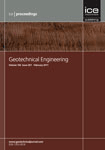
PROCEEDINGS OF THE INSTITUTION OF CIVIL ENGINEERS-GEOTECHNICAL ENGINEERING
Connecting Theory and Practice in Geotechnical InnovationsPROCEEDINGS OF THE INSTITUTION OF CIVIL ENGINEERS-GEOTECHNICAL ENGINEERING, published by Emerald Group Publishing Ltd, is a prestigious journal that serves the dynamic field of geotechnical engineering and broader earth sciences. With an ISSN of 1353-2618 and an E-ISSN of 1751-8563, this journal has established itself as a vital resource for researchers, professionals, and students alike, offering insights into innovative practices and developments within the geotechnical domain. It ranks within the Q2 category for Earth and Planetary Sciences and Geotechnical Engineering as of 2023, demonstrating its significant impact and relevance in these fields. Given its comprehensive scope from 1994 to 2024, the journal provides a platform for high-quality research articles, case studies, and technical notes, although it presently does not offer open access options. Researchers seeking to publish their work will find this journal an essential venue for reaching an audience deeply invested in the advancement of geotechnical methodologies and solutions.

Acta Geotechnica Slovenica
Pioneering Research in Geology and Geotechnics.Acta Geotechnica Slovenica is a distinguished peer-reviewed journal published by the University of Maribor, Slovenia, that focuses on the fields of geology, geophysics, and geotechnical engineering. With an ISSN of 1854-0171, it showcases significant research contributions that enhance our understanding of geotechnical challenges and innovations. The journal has been active since 2008 and has gained recognition within the academic community, holding a Q3 quartile ranking in Geology and a Q4 ranking in Geophysics and Geotechnical Engineering and Engineering Geology as per the 2023 categorization. Even though there are no Open Access options available, the journal remains an important resource for researchers, professionals, and students alike, serving as a platform for disseminating impactful findings in earth science disciplines. Its relevance is underscored by its rankings in Scopus, positioning it among the notable journals in its field. Engaging with Acta Geotechnica Slovenica offers an invaluable opportunity to stay at the forefront of geotechnical research and advancements.
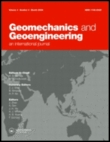
Geomechanics and Geoengineering-An International Journal
Navigating the Complexities of Earth SciencesGeomechanics and Geoengineering-An International Journal, published by Taylor & Francis Ltd, serves as a prominent platform for the dissemination of innovative research and advancements in the fields of Geotechnical Engineering and Engineering Geology. With an ISSN of 1748-6025 and E-ISSN of 1748-6033, this journal has established itself as a critical resource within its category, ranking in the Q2 quartile according to the 2023 metrics and positioning itself in the top 38% of the Scopus rankings for Earth and Planetary Sciences. Geomechanics and Geoengineering encompasses a diverse range of topics, including but not limited to soil mechanics, foundation engineering, rock mechanics, and environmental geotechnics, ultimately aiming to advance both theoretical and practical knowledge in these vital areas. This journal not only highlights pioneering research but also facilitates a platform for academia and industry practitioners to collaborate and exchange ideas. While it does not offer open access, it remains a valuable resource for institutions and individuals committed to enhancing their expertise in the geotechnical domain. With convergence years spanning from 2006 to 2024, this journal is equipped to significantly contribute to the evolving landscape of geomechanical research.

Transportation Infrastructure Geotechnology
Pioneering Research in Infrastructure Sustainability and Safety.Transportation Infrastructure Geotechnology, an esteemed journal published by SpringerNature, serves as a vital platform in the fields of Civil and Structural Engineering, Environmental Engineering, Geotechnical Engineering, and Transportation. Established in 2014 and spanning a decade of significant scientific discourse, this journal has gained recognition for its robust contribution to the understanding of the interplay between geotechnical processes and transportation infrastructure. With an impactful Q2 ranking in multiple categories—including Civil and Structural Engineering and Environmental Engineering—it emphasizes innovative research and practical applications globally. Researchers and professionals can explore critical topics that influence infrastructure sustainability, safety, and efficiency. Although it operates under a subscription model, its affiliation with SpringerNature ensures rigorous peer-review and high-quality publications, making it an indispensable resource for academics and industry experts alike.
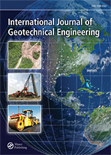
International Journal of Geotechnical Engineering
Shaping Tomorrow's Engineering with Rigorous Research TodayThe International Journal of Geotechnical Engineering, published by Taylor & Francis Ltd, is a leading academic platform dedicated to advancing knowledge and research in the field of geotechnical engineering, environmental engineering, and soil science. With an ISSN of 1938-6362 and an E-ISSN of 1939-7879, this journal has established a credible presence since its inception in 2007, reflecting its commitment to academic excellence through rigorous peer-reviewed research. Ranking in the Q2 quartile across several categories—including Environmental Engineering and Geotechnical Engineering—this journal boasts impressive Scopus rankings, placing it among the top publications in its disciplines. The journal seeks to foster a deeper understanding of soil behavior, geotechnical processes, and their environmental impacts, making it an essential resource for researchers, professionals, and students alike. While it operates under a subscription model, the wealth of knowledge and innovative findings disseminated within its pages are indispensable for anyone engaged in this vital field. With an expanding focus on interdisciplinary research and practical applications, the International Journal of Geotechnical Engineering continues to play a pivotal role in shaping the future of engineering practices worldwide.
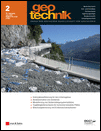
Geotechnik
Advancing Geotechnical Knowledge for a Sustainable FutureGeotechnik, published by ERNST & SOHN, is a prestigious journal in the field of Geotechnical Engineering and Engineering Geology. With its roots tracing back to 1982 and regular publications since then, it provides a vital platform for researchers, practitioners, and students to share and disseminate cutting-edge findings, methodologies, and techniques. The journal's ISSN is 0172-6145 and the E-ISSN is 2190-6653. Notably, it has achieved a commendable Q3 category ranking in 2023, reflecting its contribution to advancing knowledge in its field, as indicated by its Scopus rank of #171 out of 229 in the Earth and Planetary Sciences category. Although it does not offer open access, the journal remains integral for professionals aiming to stay informed about current trends and breakthroughs in geotechnics. Geotechnik strives to underpin its objectives of fostering quality research and encouraging innovation within the geotechnical community, ensuring it remains a crucial resource for all stakeholders involved.

Bulletin of Engineering Geology and the Environment
Unveiling the complexities of our environment through expert research.Bulletin of Engineering Geology and the Environment, published by SPRINGER HEIDELBERG, is a leading journal dedicated to the fields of Geology, Geotechnical Engineering, and Engineering Geology. With an impressive impact factor placing it in the Q1 category for both geology and geotechnical disciplines, this journal is recognized for its significant contributions to the knowledge and application of engineering geology practices. Since its inception in 1984, the Bulletin has provided a platform for researchers and professionals to share cutting-edge research, case studies, and innovative methodologies relevant to the challenges of understanding and managing geological environments. With a robust Scopus ranking—#32/321 in Geology and #43/229 in Geotechnical Engineering—this journal is an essential resource for academics and industry leaders alike, striving to advance the environmental engineering field. For those interested in accessing the latest research and developments, the Bulletin fosters a collaborative and informed scholarly community.
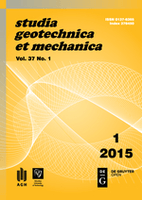
Studia Geotechnica et Mechanica
Exploring the Mechanics of Materials for Tomorrow's InfrastructureStudia Geotechnica et Mechanica is a distinguished academic journal dedicated to the vital fields of geotechnics, civil engineering, and materials science. Published by SCIENDO, this Open Access journal has been facilitating unrestricted access to research since 2012, allowing for wide dissemination of innovative findings and methodologies. Based in Poland, it contributes significantly to the scholarly community by providing a platform for the exchange of ideas, techniques, and advancements relevant to Civil and Structural Engineering, Geotechnical Engineering, and related disciplines. With an increasing emphasis on applied research, Studia Geotechnica et Mechanica is classified in various quartiles, demonstrating its emerging influence in fields such as Computers in Earth Sciences and Mechanics of Materials. The journal is indexed in Scopus, showcasing its commitment to maintaining high academic standards. By publishing peer-reviewed research articles, this journal is essential for researchers, professionals, and students looking to stay at the forefront of developments in these critical areas of engineering and science.

GEOTECHNIQUE
Pioneering Research in Geotechnics and Planetary SciencesGEOTECHNIQUE is a prestigious peer-reviewed journal published by Emerald Group Publishing Ltd, specializing in the fields of Geotechnical Engineering and Earth and Planetary Sciences. Established in 1948, this journal has consistently delivered groundbreaking research and advancements in the science of soil and rock mechanics, engineering geology, and environmental applications, aiming to foster innovation in geotechnical practices. With an impressive impact factor reflected in its Q1 ranking within both the Earth and Planetary Sciences and Geotechnical Engineering categories, GEOTECHNIQUE is recognized as a leading source of scholarly articles, positioning itself among the top 5% in the field. The journal is accessible via subscription, providing a repository of invaluable insights for researchers, professionals, and students striving to push the boundaries of knowledge and application in geotechnical topics. With a robust editorial board and a commitment to excellence, GEOTECHNIQUE continues to contribute significantly to the academic community and the practical engineering landscape.